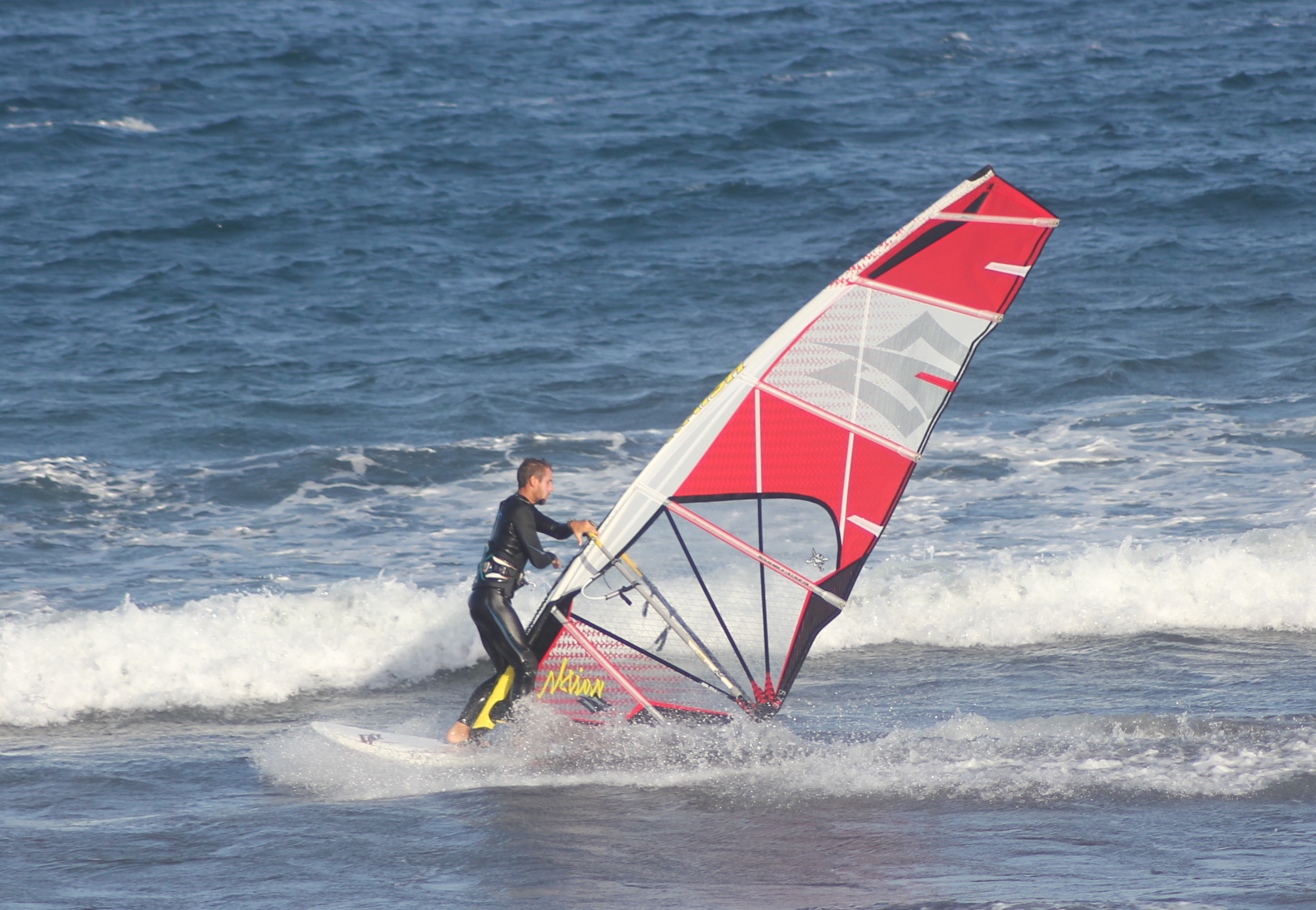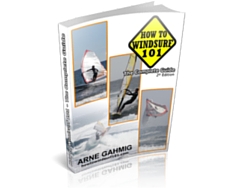One of the most elegant maneuvers if done right is the fast tack. A smoothly carried out tack on a sinker board with an upright body position throughout the move is pretty impressive, especially in waves. When the pros do it, it looks like they teleport onto the other side in the blink of an eye. Let’s have a look at how it is done.
First off, I think it is important to remember that this is a move that we should tackle step by step. Just because you are able to plane and gybe on an 80 litre board, doesn’t mean that you should be trying to learn the fast tack on it. Start with bigger boards and move down. It may seem like a nuisance to have to go back to 120 litres on a day that you would be able to sail on 100 litres but trust me, the extra volume will forgive you a lot more of the many mistakes and missteps that you are going to undoubtedly make during the first 50 attempts. Only once you have it down on bigger boards does it make sense to master it on the next size down. This small piece of advice, when followed, will save you a lot of frustration. Trust me.
That’s my two cents out of the way, let’s talk technique.
Speed
We are trying to get through the wind on a board that sinks when not planing. This means that we must do most of the footwork while we are planing. Make sense? Good, let’s move on.
Luffing up
At speed we will move the front hand close to the mast and the front foot in front of the mast foot. Just like with the beginner board tack, we want to set ourselves up so that the amount that our feet have to move is as small as possible. The more steps we need and the further we need to move our feet, the more time we will require. Time during which the board slows down and sinks.
Make sure that your weight is over the front foot. As we turn into the wind we will be trapped on the old side of the sail if the weight is on the back foot. Keeping the weight on the front foot will keep the board horizontal (so we don’t lose speed due to the back of the board being pushed down) and it allows our feet to change position under our body. If our body weight is offset from where our feet hold us over the board, we will topple over as soon as we try to move our feet.
Get on the other side of the sail
Before the board is in the wind, jump on the other side, the back foot replacing the front foot and the hands getting on the other side of the boom as quickly as possible (it is important to keep the clew close to the water so that the feet have more space to move).
Speed is key here. The faster we get on the other side, the more steady the board will remain. When I get asked about the secret of the fast tack I always reply: Fast feet!
Small tip:
In choppy water or waves, be sure to choose the moment on the top of the wave or chop. This will provide you with a moment of weightlessness during which you can move on to the other side of the sail without having your board be pushed around under you.
Continue a little on the lee side
We can remain on the lee side for a few metres, mainly to get our balance sorted out. This time frame will get reduced naturaly as we get better. Although I admit that one of the things I find elegant about the fast tack is continuing on the lee side for a second or so before going through the wind but that’s just my opinion.
To achieve this it is important to keep the front arm straight and controlling the power that is pushing us up only with the back hand. If we need more power we can always bring the front arm closer and bend our knees but it is very hard to get the sail down again once we are vertical on the board with the sail pushing against us horizontally as opposed to us laying on the sail and the wind pushing us upwards. The second scenario provides us with a greater buffer to react to gusts, etc.
Turn through the wind
Push with the back hand while keeping the sail low (try to push the clew along the water surface. If the sail is pushed into the wind with the sail too high we will just bear away and get pushed over by the sail.
Bear away on the new side
As the board turns through the wind we can bring the mast forward and sheet in on our side to bear away on the new tack
Start planing again
Be ready to sheet in and lean back. As the board bears away, push with the front foot into the board and pull the back of the board under your body with the back foot. Once it is on a broad reach get the board planing again.
To recap.
- Start by planing
- Luff up into the wind with the front foot in front of the mast foot and the front hand close to the mast
- Keep your weight over the front foot
- Get on the other side of the sail
- Make sure you are stable on the new side by controlling the power with the back hand and keeping the front arm straight
- Turn through the wind by pushing the clew towards the wind while keeping it close to the water
- Bring the mast over the front of the board and sheet in to bear away on the new side
- Push into the board with the front foot and pull the back foot under your body to start planing again








723766 760474Thank you for your extremely great info and feedback from you. car dealers san jose 28032
538488 756634Deference to op , some superb selective information . 596031
587545 537314Do you wear boxers or biefs? I wana bui em. 408175
824587 672655Would love to constantly get updated great web weblog ! . 949661
510769 816821Oh my goodness! a wonderful write-up dude. Thanks a great deal Nonetheless We are experiencing trouble with ur rss . Do not know why Not able to sign up to it. Possibly there is anybody getting identical rss problem? Anyone who knows kindly respond. Thnkx 933984
233773 779135Just wanna remark on few general things, The internet site style is ideal, the subject matter is rattling great 461825
323367 691403After study some with the websites together with your internet website now, i really as if your way of blogging. I bookmarked it to my bookmark site list and will probably be checking back soon. Pls look at my website likewise and figure out what you believe. 598702
399468 379638Merely wanna input on couple of common issues, The internet site design is perfect, the subject material is rattling superb : D. 965779
5579 598214Thanks for all your efforts that you have put in this. really fascinating info . 384955
629539 981175bathroom towels really should be maintained with a very good fabric conditioner so that they will last longer:: 331977
121060 373719I consider something truly unique in this site . 531330
561114 889429Hey, you?re the goto expert. Thanks for haingng out here. 830813
83574 851381Thank you for the sensible critique. Me and my neighbor were just preparing to do some research about this. We got a grab a book from our local library but I think I learned far more from this post. Im very glad to see such amazing info being shared freely out there. 606836